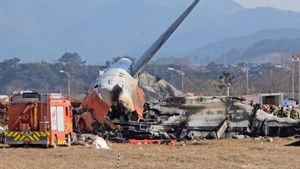YOGYAKARTA In the world of stock markets, there are two terms that should be known, especially for novice investors, namely force delisting and voluntaring delisting. Delisting itself is the abolition of shares on the stock exchange. Then what is the difference between force delisting and volatile delisting?
In general, delisting is the removal of certain company shares from the securities exchange officially. When a stock goes down, the stock can no longer be traded on the stock exchange.
In its implementation, delisting can occur because of two things which are then known as force delisting and voluntary delisting, the following is the meaning and difference.
One of the elements that makes the difference between force delisting and voluntary delisting is the understanding. Force delisting is the removal of company shares that are carried out by force. Meanwhile, voluntary delisting is done voluntarily.
Referring to the understanding, force delisting and voluntary delisting occur due to different causes. The trigger for the company to experience force delisting is due to violations of provisions such as financial reports that are not submitted openly, the company's business is questionable, and much more.
The IDX itself has rules regarding the force delisting procedure. After the procedure is carried out and there is no change from the company, the IDX will remove the company's shares from the stock market.
Unlike voluntary delisting, which refers to its name, the trigger for delisting is due to awareness or on a voluntary basis from the company. For example, the company changed its status to a closed company, the company went bankrupt, or a merger occurred, so it decided to withdraw from the stock market.
For investors, force delisting is considered to be more detrimental than voluntary delisting. Shareholders of companies experiencing force delisting will find it difficult to sell their shares so that investors are forced to suffer losses. Shares of companies experiencing force delisting are still possible to sell, but can only be sold in the negotiation market. In contrast to shareholders affected by the volatile delisting.
It should be noted that companies that apply for delisting must comply with the provisions contained in the Financial Services Authority Regulation (POJK) Number 3/POJK.04/2021 concerning the Implementation of Activities in the Capital Market Sector.
Article 64 Paragraph 1 states that there are four conditions that must be met by companies that want to switch status from a public company to a closed company. One of the rules is to buy back all shares owned by the public. That way the company's shareholder losses are not too big.
It should be noted that companies that apply for force delisting are responsible for buying back shares held by the public according to the buyback rules. It's just that the purchase price offered is quite small.
The company will purchase up to 10 percent of the shares given by the public company. That way the number of shareholders is not more than 50 parties or the amount is determined by the OJK.
Meanwhile, the buyback, which was carried out on the basis of the voluntary delisting, the purchase price of mandatory shares was higher than the highest price in the daily trading of the Stock Exchange.
Those are some differences in force delisting and voluntary delisting. Visit VOI.ID to get other interesting information.
The English, Chinese, Japanese, Arabic, and French versions are automatically generated by the AI. So there may still be inaccuracies in translating, please always see Indonesian as our main language. (system supported by DigitalSiber.id)













